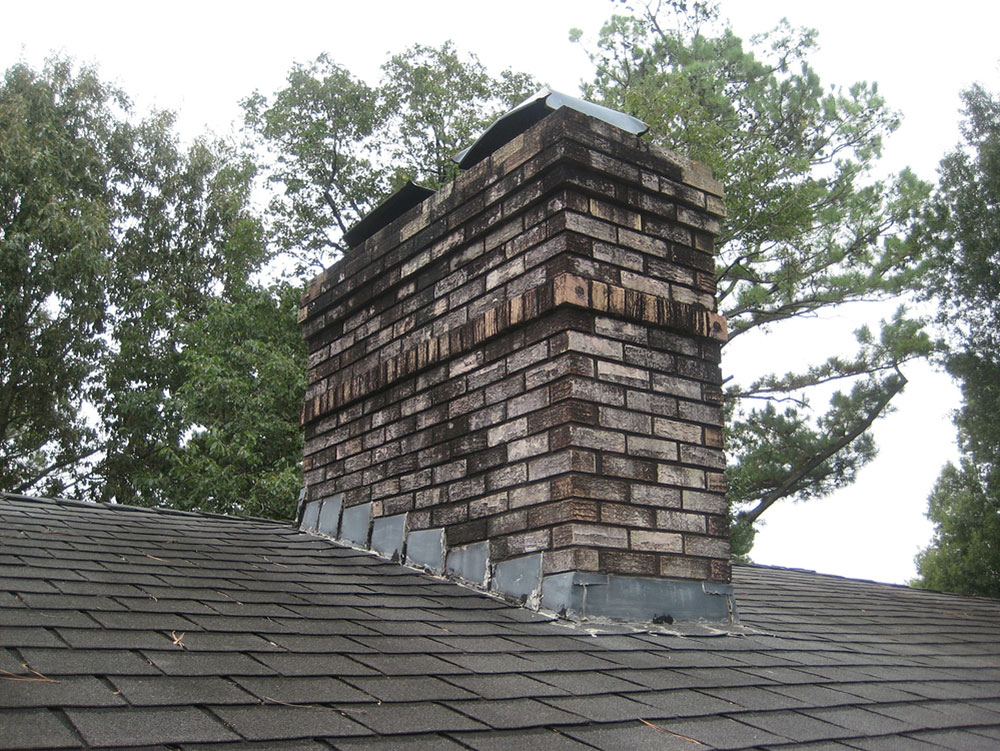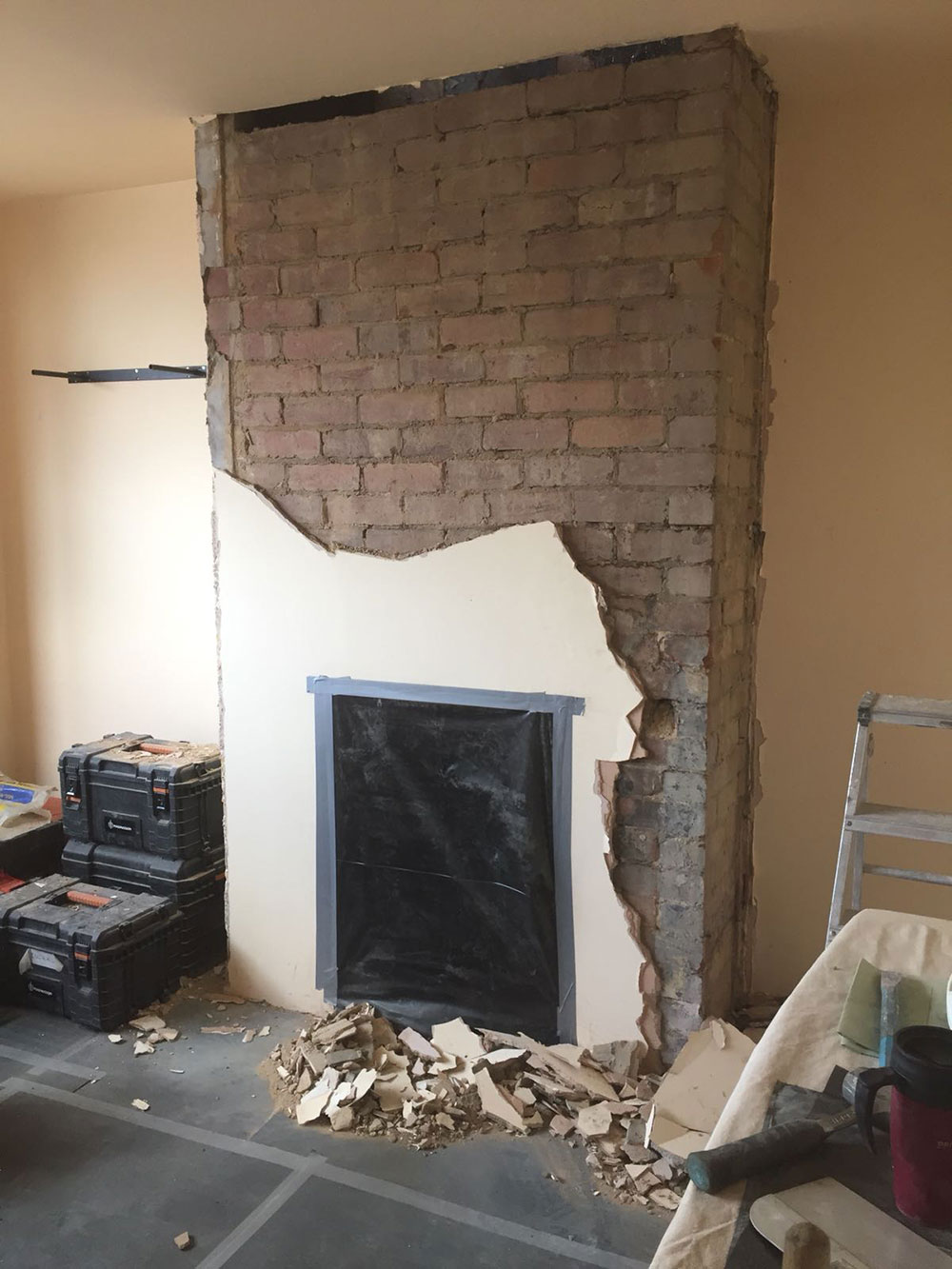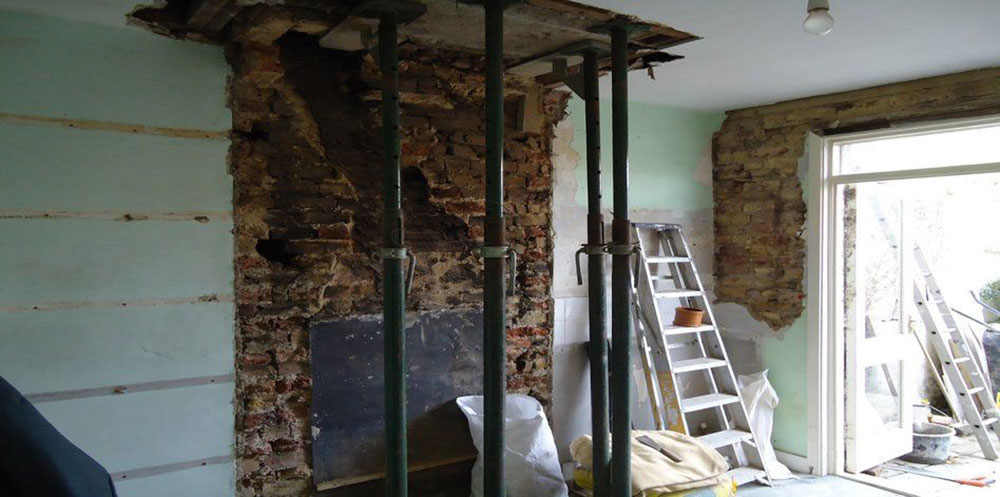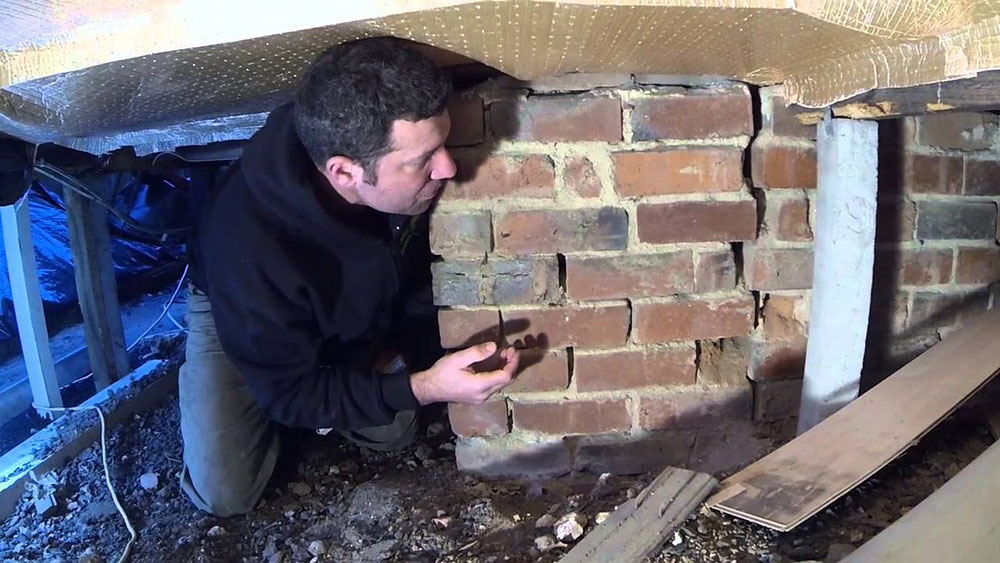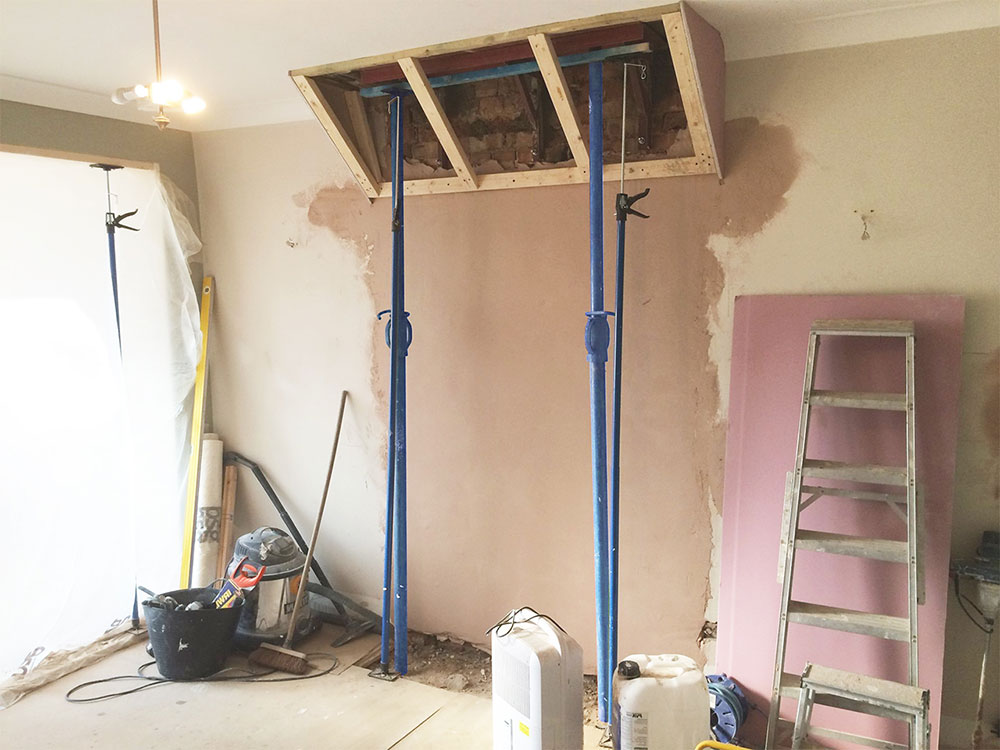Advertisement
Chimneys can be a double-edged sword. Yes, on one hand the fireplace can be this center piece of your living room, and also a very useful source of heat. It provides that romantic feeling and a focal point where the family can gather around and have a beautiful evening.
On the other hand, if it is unused, it can actually cause more harm than good. It provides a point for the warm air to escape through, and the cold air to enter your home. It might compromise on the efficiency of your heating system, and your HVAC system will have to work extra to meet the heating demands.
Also, it might be taking up crucial space in your living room that can be used for other means. In this article, we will take a look at how to remove a chimney.
Why Would You Remove a Chimney?
Now, the question might arise why one would remove a chimney from their house. Actually, many house owners who initially decided for a fireplace then decide to remove the chimney and the fireplace as it is using too much space, or they are just causing the heat to escape through it. These are the most common reasons for removing a chimney.
They may damage the fireplace
Chimneys can, after longer periods of no usage, provide the entry points for various leaks and damage can occur, especially if the chimney starts crumbling. You might avoid additional costs that you would need to consider if the fireplace would get damaged. Various cracks and leaks are relatively easy to repair, although additional damage can occur.
They are out of fashion

Image source: Grace Hill Design
Yes, fireplaces were one time, the only heating source for the household or the family living in the house. Today, there are so many different types of heating that fireplaces are very rarely used for heating the house.
Instead, they often play a more decorative role with occasional opportunities to light it up, for example, during the festive season. But some don’t even use it for that, and it can become a nuisance instead of presenting added value.
It takes up essential space
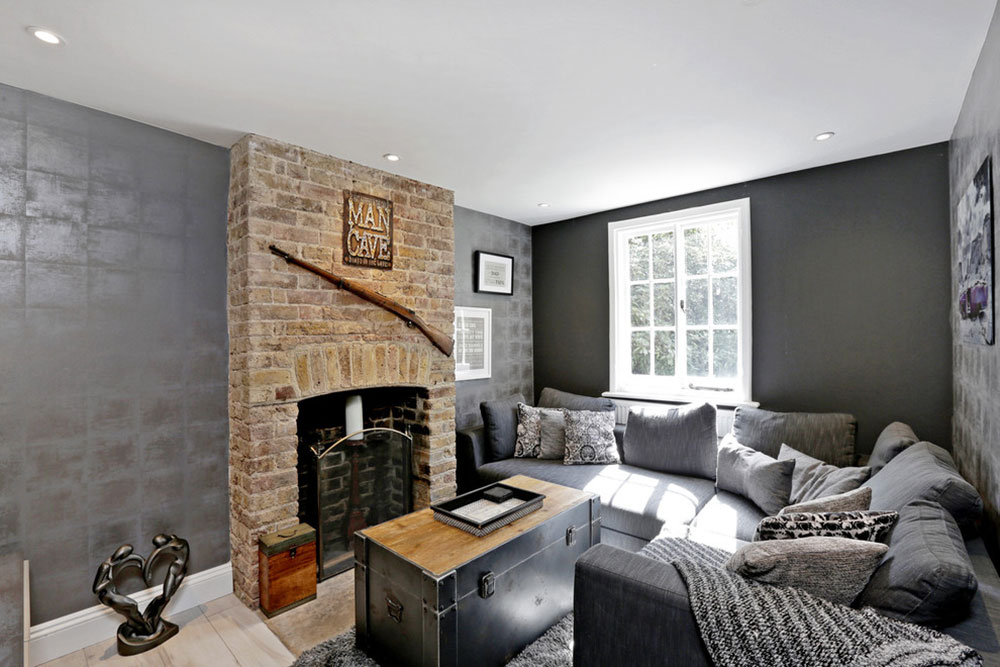 Image source: M&Y Interiors
Image source: M&Y Interiors
Chimney breasts and fireplaces take up a lot of space. Many owners decide to refurbish or completely remove the fireplace and use the space for other reasons. Perhaps they want to move the furniture there, or they use this space for shelving, storage, or other means.
If you have a fireplace in a bedroom, this is an even more significant issue. If you don’t use it, then you should consider removing it altogether.
You are losing energy
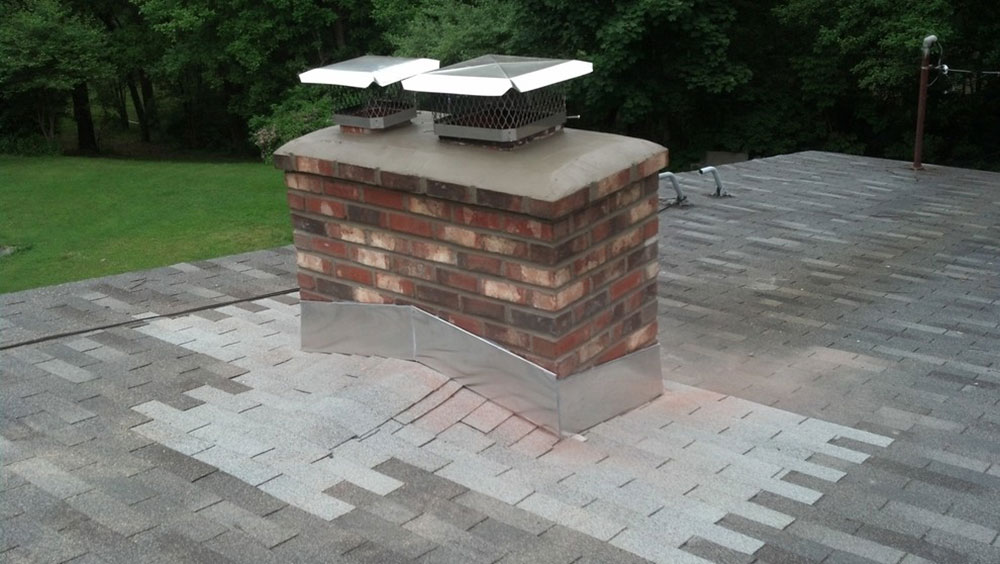 Image source: Hearth & Home
Image source: Hearth & Home
Unused chimneys can be costing you money without you even realizing. They let warm air escape through them, making your heating system work overtime to provide the additional heating that escapes through the chimney.
Moisture might creep in
Chimneys are a good way for moisture to start coming into your home. And that is not a good thing, as you can have further issues from that. Mold can start to grow, and you will soon have additional costs. Perhaps a partial demolition would help with the moisture.
Should I Remove it Completely or Partially?
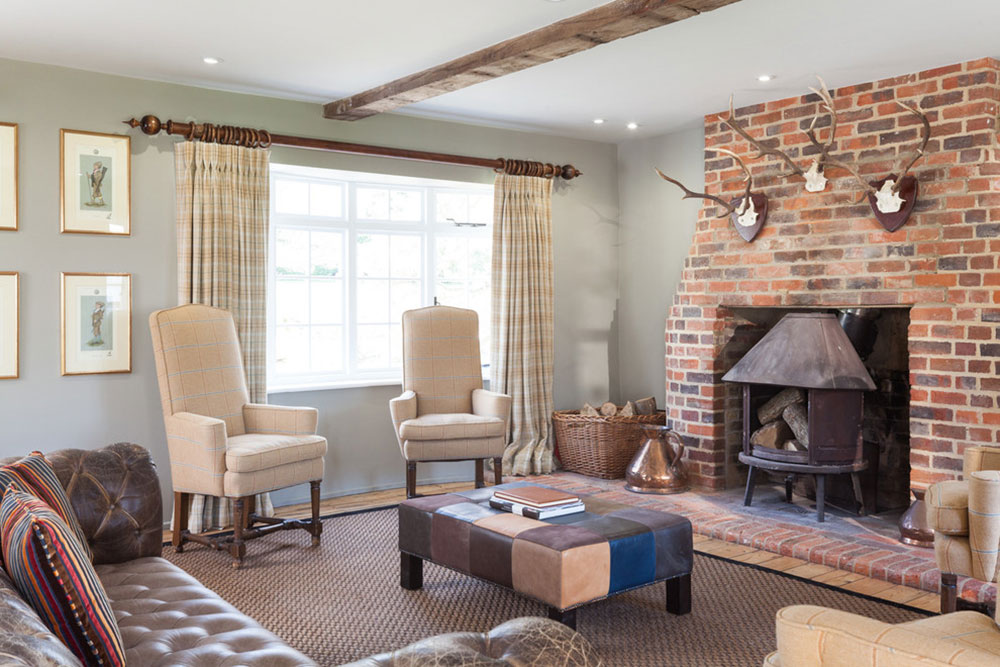 Image source: Ryan Wicks Photography Ltd
Image source: Ryan Wicks Photography Ltd
Speaking of partial or permanent removal, you will have to decide what to do based on your needs and specifications. The methods of how to remove a chimney will alter significantly for either process.
But a chimney is a complicated structure consisting of two main parts: the chimney breast within your home, and the chimney stack that is visible from the outside.
In any case, you will have to remove the chimney stack. But some people still opt to keep the chimney breast or the fireplace that is contained within the house. This depends on your preferences, your budget for removing the chimney, and how the chimney is installed.
The chimney breast can be kept for decoration, if you wish to do so. It is not unusual to see them without a chimney.
Full removals tend to be far more complex and will take a lot more time, as you will have to remove the whole structure. You will be left with a large gap in your home, be prepared and plant what to do with it beforehand.
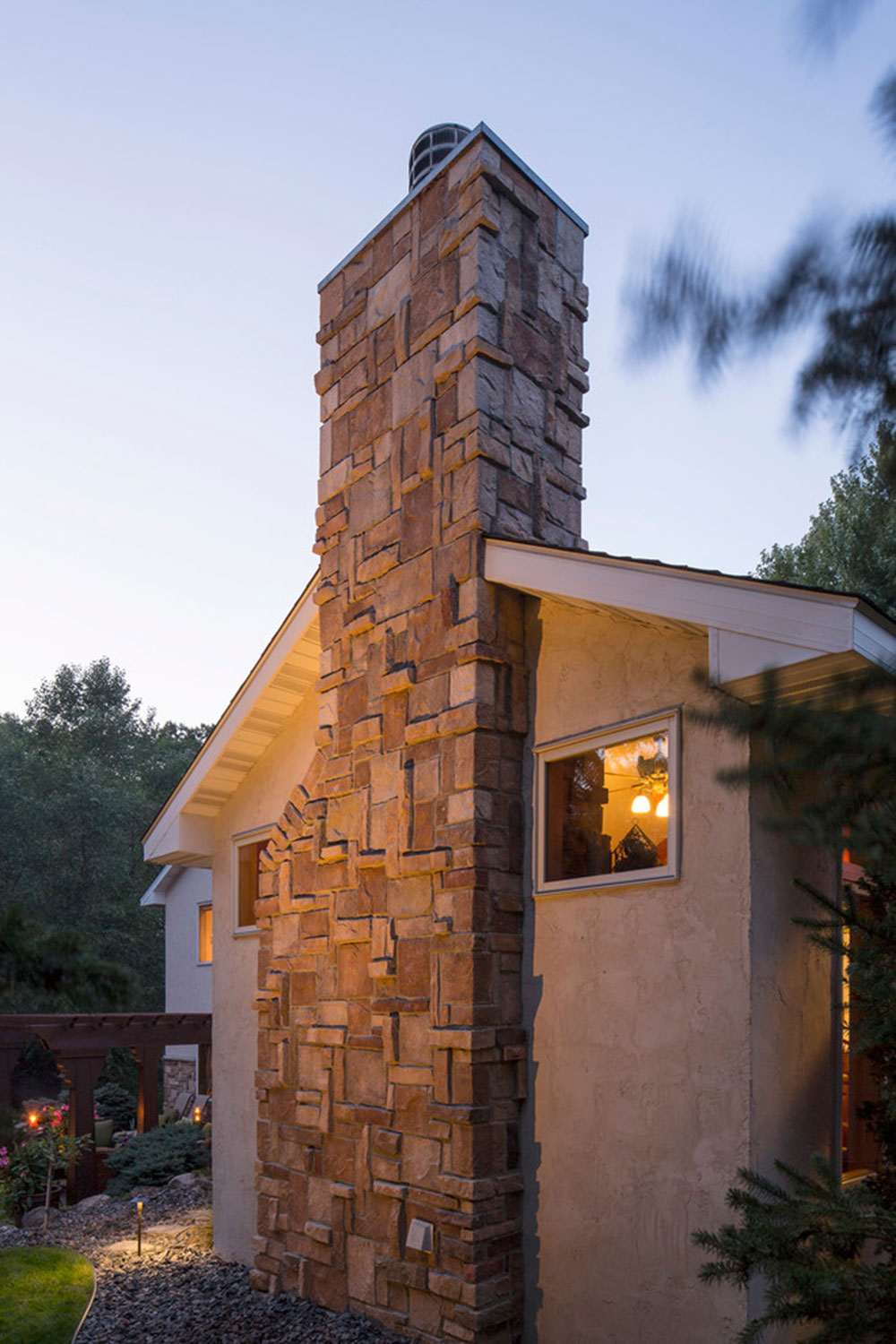 Image source: L&R Suburban Landscaping Inc
Image source: L&R Suburban Landscaping Inc
But, as we said, full chimney removals are a complex procedure. The neighboring walls and structures can be especially vulnerable and at the risk of getting in the harm’s way. To support any masonry or neighboring architecture, it would not be unwise to install support beams in order to prevent the whole structure from getting harmed.
You should pay special attention to areas where the chimney is connected to a wall or to a neighboring property. On a fully detached house, removing the chimney from an external wall might make sense; full removal might weaken the entire wall, though.
How to Remove a Chimney
Now, let’s move to the meat and potatoes, to how to remove a chimney successfully without causing damage.
Removing a chimney should be considered only by more advanced DIY enthusiasts and those who have some experience with this sort of work. How you will remove the chimney depends on your chimney structure; if it has its own structure, it will be relatively easy to do so. If the chimney is a part of a bigger structure or of the whole structural project, then it might be a bit trickier. Here’s how to do it.
Preparation and Research is Key
If you are going to remove the chimney yourself, you should prepare properly and conduct some research before you start. Also, take some precautionary measures to reduce the risk while doing it.
- You might need to obtain a permit before you move onto removing the chimney itself.
- Find or buy safety equipment: dust mask, gloves, eye protection, sturdy work boots, safety harness, and a helmet also wouldn’t hurt.
- Around the working area, hang floor-to-ceiling plastic to prevent pieces of debris and dust from entering your home.
- Consider renting a scaffold from your local home supply shop. The scaffold should be safe and stable, and should have safety rails. Scaffold attachments also requires some skilled hands, and you might profit from a professional.
How to Remove a Chimney
Here is a step-by-step process of how to remove a chimney.
- We’ll start by removing the chimney breast first. You will need to support the chimney properly. The gallows bracket illustrated below is a very common method of doing that.
- Starting at the top, start removing the bricks one by one using a hammer, masonry chisel, and sledgehammer. Don’t throw the bricks down; instead, pile them on the scaffold until you get a pile. You will be able to lower them to the ground using a 5-gallon bucket and a rope.
- Once you make your way below the roof, you will notice that there will be gaping holes that will require additional renovation costs later on. This might include patching the roof, framing, and finishing soffits and eaves. On the wall, the siding will also need to be filled, and gaping holes might also start to appear.
- The structure of the house should still be intact, though. However, that is not the case below the floor line. Here, we are looking at floor framing fixes and other foundation works, depending on the damage.
- Removing the chimney breast can be done without altering the external structure. Some owners decide to keep the chimney breast.
What are the Costs of Removing a Chimney?
If you are not a DIY expert and you don’t how to remove a chimney, then you might need to consult a professional. Although you won’t have to do any work, there will be significant costs to the procedure.
Depending on the rates that a professional charges, or the scale of the works, there might be varying costs. A structural engineer should also be considered.
- $500-$2000 for partial chimney removals.
- $4000-$6000 for complete chimney removals.
However, there are different considerations and aspects that can change the price. These include:
- Full or partial removal
- Size of the chimney
- Is the chimney a part of the structure or not?
- The materials that are used for building the chimney
- The amount of debris
- The contractor fees.
Choosing the right removal service is important. A professional service should be considered, and a reliable one too.
FAQs about removing a chimney
1. What is the process for removing a chimney from a house?
Disconnecting any utilities, removing the chimney stack, dismantling the chimney structure, and fixing any harm to the roof or surrounding area are all processes in the process of removing a chimney from a property. Since this procedure can be hazardous and necessitates specialist tools, it should only be carried out by qualified professionals.
2. Can a homeowner remove a chimney by themselves or do they need to hire a professional?
A chimney should never be removed by a homeowner alone. It is a difficult and hazardous job that should only be carried out by a qualified expert with chimney removal knowledge. Without the right expertise and tools, removing a chimney could result in significant injury or property damage.
3. How much does it typically cost to remove a chimney?
The price of chimney removal varies according to the chimney’s size, location, and degree of difficulty during removal. For chimney removal services, homeowners should budget somewhere between $2,000 and $4,000 on average.
4. Will removing a chimney impact the structural integrity of the house?
The structural stability of the home may be impacted by removing a chimney, particularly if it is load-bearing. A structural engineer should evaluate the condition before removal to see whether any further supports or reinforcements are required to maintain the home’s structural integrity.
5. How do you patch the hole left in the roof after removing the chimney?
To stop water damage and make sure the roof is still in tact after removing a chimney, the hole that is left in the roof must be patched. This entails cleaning up any leftover debris, setting up fresh roof decking, and shingling the area to match the roof.
6. Is it necessary to remove the entire chimney or can it be partially removed?
To stop water damage and make sure the roof is still in tact after removing a chimney, the hole that is left in the roof must be patched. This entails cleaning up any leftover debris, setting up fresh roof decking, and shingling the area to match the roof.
7. Are there any permits or inspections required before removing a chimney?
Before dismantling a chimney, licenses and inspections could be necessary depending on local laws. Before beginning the removal procedure, homeowners should find out what permits and inspections are required by contacting their local government offices or building department.
8. What are some potential safety hazards associated with removing a chimney?
The possibility of damage from equipment and tools, exposure to toxic chemicals, and falling debris are all safety risks involved with chimney removal. Professional chimney removal services are trained and equipped with the required safety measures to reduce these hazards.
9. Can the bricks from the chimney be reused or repurposed after removal?
The bricks from a demolished chimney may occasionally be recycled or reused. To make sure they are structurally solid and safe to use, they must first be cleaned and examined.
10. How long does it usually take to completely remove a chimney from a house?
The size, location, and difficulty of the removal process are a few of the variables that affect how long it takes to entirely remove a chimney. In general, chimney removal can take one to three days, however it occasionally takes longer.
If you enjoyed reading this article about how to remove a chimney, you should read these as well:


